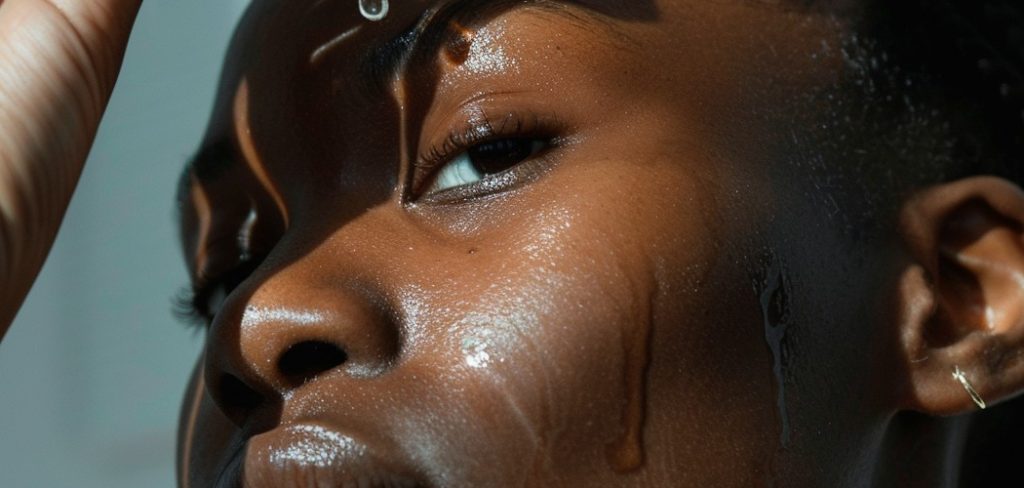Are you suffering from dull skin, uneven complexion, fine lines, or dark circles? A night face mask may be just the solution for you! Night masks are a great addition to your skincare routine as they work overnight to nourish and rejuvenate your skin. In this guide, we will discuss everything you need to know about how to apply night face mask.
Applying an overnight face mask is an excellent way to rejuvenate your skin while you rest. These masks are designed to work overnight, providing deep hydration, nourishment, and repair to your skin. Knowing the correct way to apply a night face mask ensures you get the most out of its benefits, leaving your skin refreshed, glowing, and healthy by morning.
Before starting, it’s essential to understand the steps to properly prepare your skin and apply the mask for optimal results.

What Are the Benefits of Using a Night Face Mask?
Night face masks offer numerous benefits for your skin, making them essential to your skincare routine. Some of the key benefits include:
- Deep Hydration: During the day, our skin is exposed to various environmental stressors that can strip it of moisture. A night face mask provides intense hydration to replenish and restore your skin’s moisture levels while you sleep.
- Nourishment: Many night face masks contain nourishing ingredients such as vitamins, antioxidants, and essential oils that help nourish and repair the skin. These ingredients work together to improve skin texture, promote cell turnover, and reduce signs of aging.
- Repair: While we sleep, our bodies go into repair mode, and our skin is no exception. A night face mask can help enhance this natural repair process by providing the necessary nutrients for cell regeneration. This helps to heal any damage done to the skin during the day, leaving you with a healthier and more radiant complexion.
- Anti-Aging: Lack of sleep can take a toll on our skin and accelerate signs of aging, such as fine lines, wrinkles, and dullness. Night face masks are formulated with anti-aging ingredients that combat these effects and promote youthful-looking skin.
- Relaxation: Applying a night face mask before bed can be a relaxing ritual that promotes better sleep. The soothing scents of essential oils and the mask’s cooling sensation can help ease tension and calm the mind, leading to a more restful night’s sleep.
What Will You Need?
To create an effective and nourishing night face mask, you will need a few key ingredients and tools:
- Base Ingredients: These can include moisturizing agents such as honey, oils (coconut, almond, jojoba), or aloe vera gel.
- Active Ingredients: Look for anti-aging ingredients like retinol, hyaluronic acid, collagen, or vitamin C. You can also use natural ingredients like avocado or banana for their nourishing properties.
- Tools: A small mixing bowl and a spatula are all you need to mix your ingredients together. If using a sheet mask, make sure to have one on hand.

8 Easy Steps on How to Apply Night Face Mask
Step 1. Cleanse Your Face:
Start by thoroughly washing your face to remove dirt, oil, or makeup lingering on your skin. Use a gentle cleanser suited for your skin type and lukewarm water to avoid stripping your skin of its natural oils. Pat your face dry with a clean, soft towel, ensuring your skin is clean and ready to absorb the nutrients from the face mask. Cleansing is crucial as it allows the mask to penetrate your pores and deliver its full benefits effectively.
Step 2. Exfoliate (Optional):
Exfoliating before applying a face mask can help remove dead skin cells and prepare your skin to absorb the mask’s nutrients. Choose a gentle exfoliator that suits your skin type, and apply it in circular motions for about 30 seconds, focusing on areas prone to dryness or roughness. Rinse thoroughly with lukewarm water and pat your face dry. Skip this step if your skin is sensitive or your mask is designed for sensitive skin.
Step 3. Apply the Face Mask:
Using a clean brush or fingertips, evenly apply the face mask across your skin, avoiding sensitive areas such as the eyes and lips. Make sure to spread a consistent layer, thick enough to cover the skin but not excessively heavy. Start at the center of your face and work outward, paying special attention to areas that need extra care, such as the T-zone or cheeks. If the mask is designed for a targeted treatment, apply it only to the specific areas as directed.

Always follow the instructions on the product packaging to ensure you get the best results. Allow the mask to sit for the recommended duration, typically between 10 and 20 minutes, depending on the type of mask. During this time, try to relax and avoid touching your face to fully allow the mask to work its magic.
Step 4: Rinse Your Face
Once the mask has had enough time to work, gently rinse it off with lukewarm water. Use your hands or a soft washcloth to remove all residue, being careful not to scrub or irritate your skin.
After patting your face dry with a clean towel, follow up with a moisturizer to lock in hydration and maintain the treatment results. This final step helps soothe and protect your skin, leaving it feeling refreshed and nourished.
Step 5: Repeat as Needed
Consistency is key when incorporating a mask into your skincare routine. Depending on your skin type and the specific mask you are using, repeating the treatment one to three times per week may be beneficial. For those with oily or acne-prone skin, regular use of a clarifying mask can help to control excess oil and prevent breakouts.
If you have dry or sensitive skin, use a hydrating or soothing mask and limit usage to avoid over-exfoliation or irritation. Always pay attention to how your skin reacts and adjust the frequency to maintain a healthy balance. With a consistent routine, you can enhance your skin’s natural glow and keep it feeling soft, smooth, and rejuvenated.
Step 6: Use Masks as a Form of Self-Care
In addition to their skin benefits, face masks can be a great addition to your self-care routine. Applying a mask and relaxing while it works its magic can help reduce stress and promote overall well-being. You can make it a part of your weekly or monthly self-care ritual, giving yourself some much-needed pampering and rejuvenation.
Moreover, using face masks can also be a meditative experience. As you apply the mask, take deep breaths and focus on the present moment. This can help clear your mind and bring a sense of calmness and mindfulness.
Step 7: Ensure to Double Cleanse
Before using a face mask, ensuring your skin is thoroughly clean is essential. This will help the mask penetrate deeper into the skin and provide maximum benefits. Double cleansing is an excellent method to achieve this.

First, use an oil-based cleanser to remove any makeup, sunscreen, or excess oil from the surface of your skin. This will also help loosen up any impurities trapped in your pores.
Next, follow up with a water-based cleanser to remove any remaining dirt or residue. This will leave your skin feeling clean and ready for the face mask.
After using the face mask, it is equally important to double cleanse again.
Step 8: Moisturize, Moisturize, Moisturize!
Moisturizing is a critical step that should never be skipped, regardless of skin type. It helps lock in hydration and maintain your skin’s moisture barrier, ensuring your face stays supple and healthy. Choose a moisturizer that works well with your skin type—a lightweight gel for oily skin or a rich cream for dry skin.
Apply it in upward motions to encourage blood flow and absorption. For best results, moisturize your skin while it’s still slightly damp from cleansing or applying other products, as this helps seal in hydration more effectively. Don’t forget to include your neck and décolletage, as these areas are just as prone to dryness and signs of aging. Remember, consistent moisturizing is key to achieving soft, glowing skin.
You can achieve and maintain healthy, hydrated skin by following these steps and incorporating a moisturizer into your daily skincare routine.
5 Things You Should Avoid
- Skipping a Clean Face: Always cleanse your face thoroughly before applying a night mask. Applying a mask on unclean skin can trap dirt, oil, and impurities, leading to clogged pores and potential breakouts.
- Using Too Much Product: Applying an excessive amount of the mask doesn’t enhance its effectiveness. Instead, it can overload your skin, making it difficult to absorb nutrients and possibly cause greasiness.
- Applying Around the Eyes: The skin around your eyes is delicate and sensitive. Avoid applying the mask directly in this area unless it is specifically formulated around the eyes.
- Leaving the Mask On for Too Long: Follow the recommended time instructions provided with the mask. Leaving it on longer than suggested can lead to skin irritation or dryness.
- Not Sealing with Moisturizer Afterward: Once you rinse off the mask, don’t forget to follow up with a moisturizer. Skipping this step can leave your skin feeling dry and missing the opportunity to lock in hydration.

Conclusion
How to apply night face mask correctly can significantly enhance your skincare routine, delivering hydration, nourishment, and repair while you sleep.
You can achieve optimal results by following the proper steps—cleansing your face thoroughly, selecting the right mask for your skin type, and adhering to the recommended time limits. Don’t forget to finish with a good moisturizer to lock in the mask’s benefits.
Consistency and care are key to reaping the full advantages, ensuring your skin looks and feels its best.
About the Author
Jane Hubbard is a passionate beauty expert with a wealth of experience in makeup, hair, and overall beauty techniques. After years of working as a hairdresser specialist, she followed her entrepreneurial spirit and started her own consultancy business.
Jane has always been driven by her desire to help others feel confident in their own skin, and she does this by sharing her knowledge, experiences, and practical beauty tips. Through her consultancy, she empowers individuals to embrace their unique beauty, offering tailored guidance that boosts both self-esteem and personal style.
Professional Focus
- Specializes in makeup, hairstyling, and beauty consulting.
- Provides personalized beauty advice, tips, and techniques to help individuals feel confident in their appearance.
- Dedicated to staying up-to-date with the latest industry trends and developments.
- Passionate about creating a comfortable and empowering experience for every client.
Education History
- University of Craft and Design – Bachelor of Fine Arts (BFA) in Woodworking and Furniture Design
- Woodworking Apprenticeships – Extensive hands-on training with skilled craftsmen to refine carpentry and furniture making techniques
- Online Courses & Masterclasses – Continued education in advanced woodworking techniques, design principles, and specialized tools
Expertise:
- Makeup artistry, hairstyling, and beauty consulting.
- Personalized beauty techniques to enhance confidence and self-expression.
- Educating clients on how to maintain their beauty routines at home.
